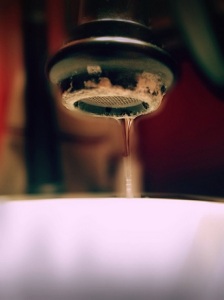
A leaky faucet is capable of dribbling out a reasonable amount of water with time thereby increasing your utility bills. Therefore, it is important for one to fix the problem as soon as they can as this helps to save money as well as the environment.
A basic repair of the faucet should not take much effort or time but it might require you to purchase new replacement parts. The most likely cause of the leak is probably the washer, as with time faucet washers may get stiff and eventually crack making them lose their effective function as sealers. However, they are inexpensive and very easy to replace and this article provides a step by step guideon how to fix your leaking faucet.
Before you start to fix a leaky bathroom faucet, first turn the water off. Search for the pipes running up to your faucet under your sink and along them there will be handles somewhere that you may turn to stop the water from flowing. To turn the water off, turn the handles in a clockwise direction.
Once you have turned the water off, block the sink drain either using a rag or the sink’s in-built mechanism to prevent the screw or washer from draining. Using a screw driver, remove the faucet handles by removing the screw that holds them on. Note that some faucet handles may hide their screws at the back of the metal or plastic caps and you may need to pry the cap off by using a flathead screwdriver to reach the screws that hold the handle on.
Once you have removed the screws, use a flat screwdriver to pry the handles off. Some handles may come off very easily without any need for prying.
The next step is to unscrew the nut that holds the handle in position and also unscrew the rod and take it off. Remove the screw that is at the washer and then take out the washer. If no washer is present, you can add one. Using a mild soap and water, clean the rod, cavity and handle. Evaluate the rod for any wear and in case it appears to be corroded or worn out, you can also replace it.
Reassembly will be much easier if you make a drawing that will help you to know how to put the parts back in place. Use the old washers as a template to be able to source the correct new washer.
Then take the washer you have purchased and simply place it where the old one was. Basically the hole in the washer must be just a little larger than the post which the handle turns. Place the handle on the post and then put back in the screw and tighten the handle all the way. This means you need to tighten the screw up to a point that you feel is tight without using any extra force to tighten it. Then turn the handles below the sink in counter clockwise direction to turn your water back on.
Check it the faucet and water flow. If everything was done correctly, you should not have a leaky faucet any more. If the faucet continues to leak, try and tighten the screws on the handles a little more. If your faucet is still leaking, then it is time to look for a plumber.